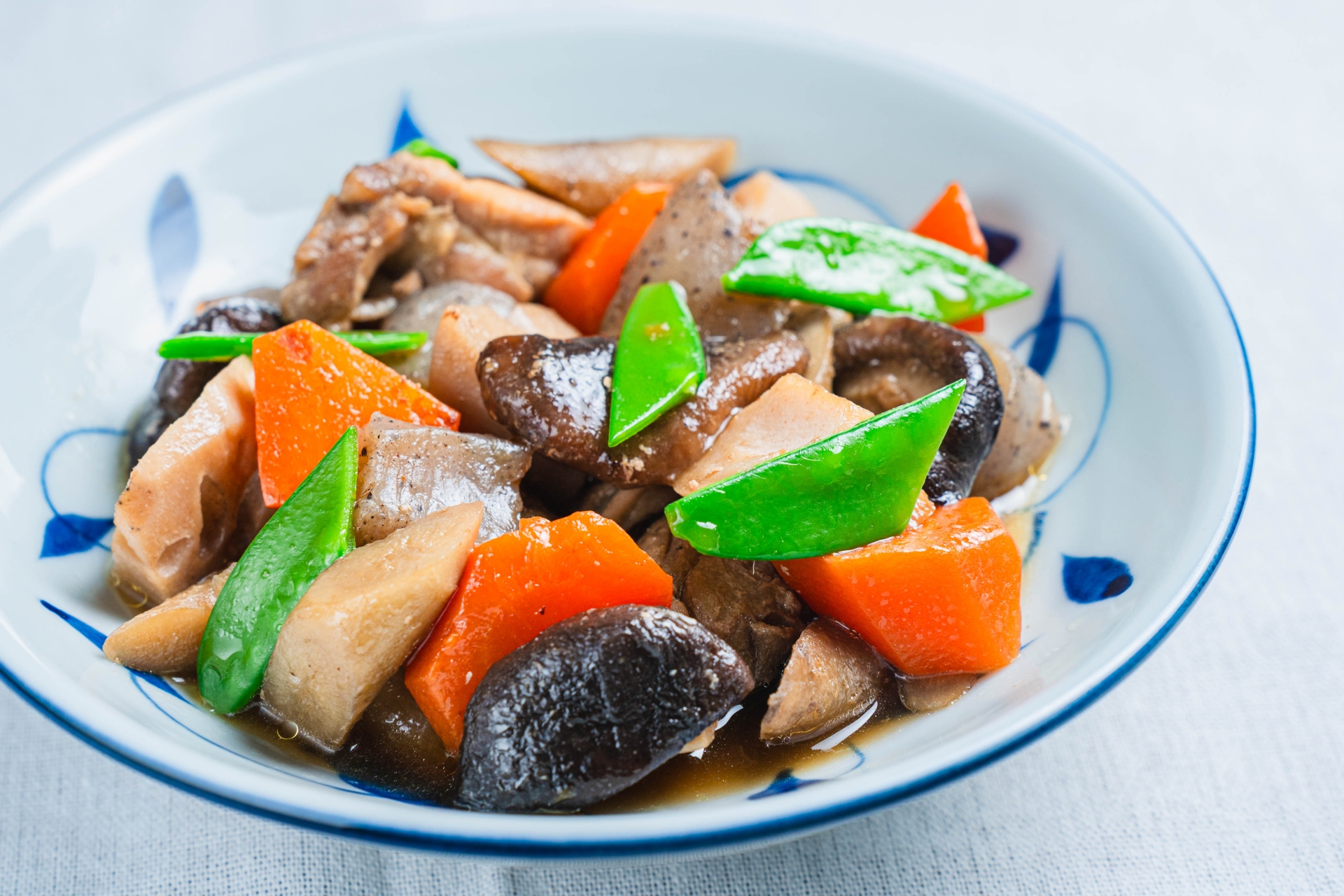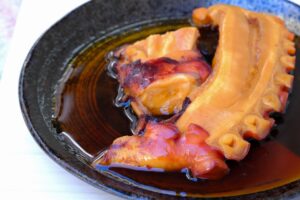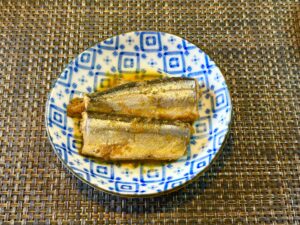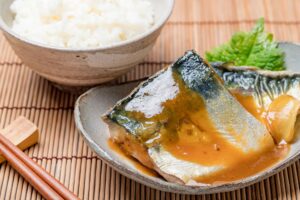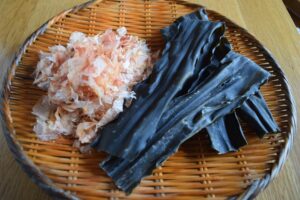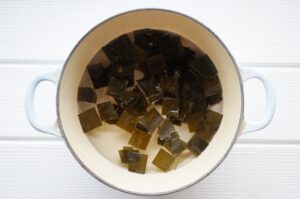Chikuzen-ni is a classic Japanese simmered dish that combines chicken with an assortment of root vegetables in a savory-sweet broth. Commonly served during the New Year as part of osechi ryori, this hearty dish embodies the essence of Japanese home cooking. In this article, we explore what Chikuzen-ni is, its origins, ingredients, variations, and how you can make it at home—even with ingredients available outside Japan.
What is Chikuzen-ni?
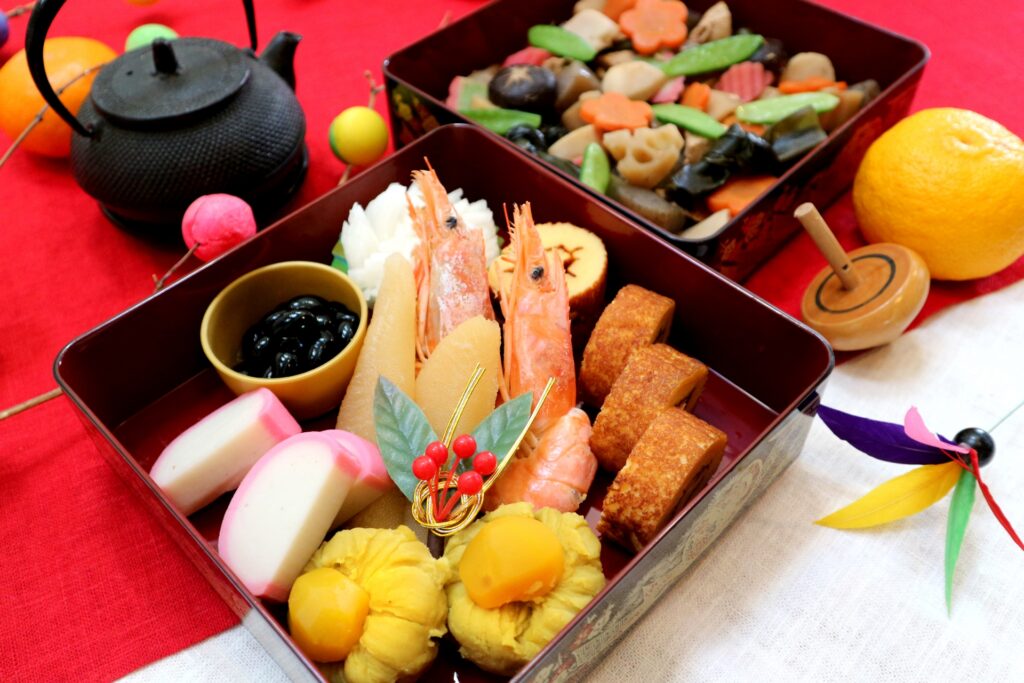
Chikuzen-ni is a beloved Japanese simmered dish (nimono, 煮物) that brings together bite-sized pieces of chicken with hearty root vegetables, all gently simmered in a savory-sweet broth made from dashi, soy sauce, mirin, and sake. Often referred to as “Nishime” in some regions, this dish is a staple of Japanese home cooking and is especially popular during the New Year celebration as part of osechi ryori, the traditional Japanese New Year feast.
The ingredients typically include chicken thigh or breast, carrots, lotus root (renkon), burdock root (gobo), shiitake mushrooms, konnyaku (yam cake), and snow peas for color. These components are not only chosen for their taste and texture but also for their cultural symbolism and visual appeal. Chikuzen-ni is often prepared in large batches and allowed to rest, allowing the flavors to meld and deepen overnight, making it a popular make-ahead dish.

The Origins and Cultural Significance of Chikuzen-ni
Chikuzen-ni originated in the Chikuzen region, which is now part of modern-day Fukuoka Prefecture on Japan’s southern island of Kyushu. Historically, the dish was known as a local specialty and evolved into a staple for celebratory occasions, especially during the New Year.
As part of osechi ryori, Chikuzen-ni holds symbolic meanings in Japanese culture. Each ingredient represents wishes for the new year: longevity, stability, prosperity, and happiness. It is common to see Chikuzen-ni served in layered lacquer boxes (jubako) during the first few days of the year, alongside other traditional dishes. The method of simmering ingredients together also represents unity and familial harmony, making it a meaningful part of seasonal gatherings.

Key Ingredients in Chikuzen-ni and Their Meaning
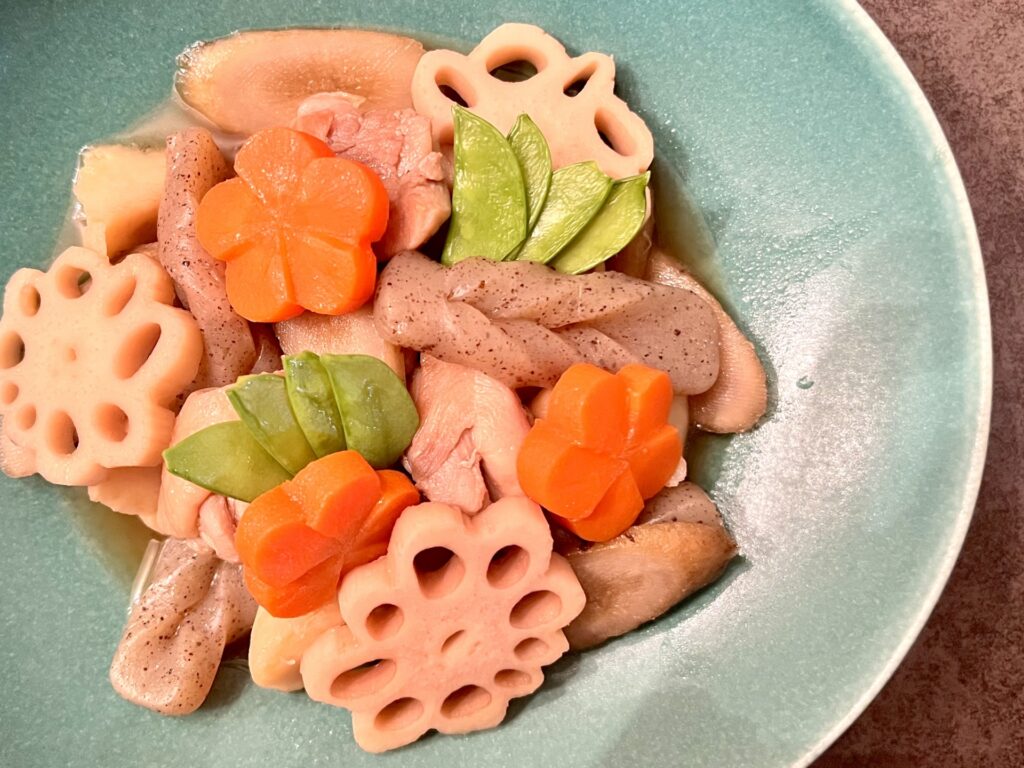
Chikuzen-ni is more than just a flavorful stew; it is rich in symbolism. Here are the key ingredients and what they represent:
- Chicken: Symbolizes prosperity and strength. Chicken is often chosen for its accessible flavor and satisfying texture.
- Lotus root (renkon): With its holes, lotus root is said to represent a clear view of the future.
- Burdock root (gobo): Long and sturdy, burdock symbolizes stability and deep family roots.
- Shiitake mushrooms: Represent longevity and good health.
- Carrots: Their bright orange color symbolizes joy and good luck.
- Konnyaku (yam cake): Symbolizes purification and emotional harmony. Its elastic texture is believed to represent flexibility in relationships and is often associated with good relationships and marital harmony (ryouen, fūfu enman).
- Snow peas: Often added for visual contrast and a touch of freshness.
Ingredient Substitution Tips for International Cooks
For those living outside Japan:
- Taro can be replaced with potatoes.
- Lotus root may be substituted with parsnips for texture.
- Snow peas can be swapped for green beans.
- Konnyaku can be omitted or replaced with firm tofu.
These substitutions ensure that international home cooks can enjoy Chikuzen-ni without compromising its essential character.
How to Make Chikuzen-ni at Home
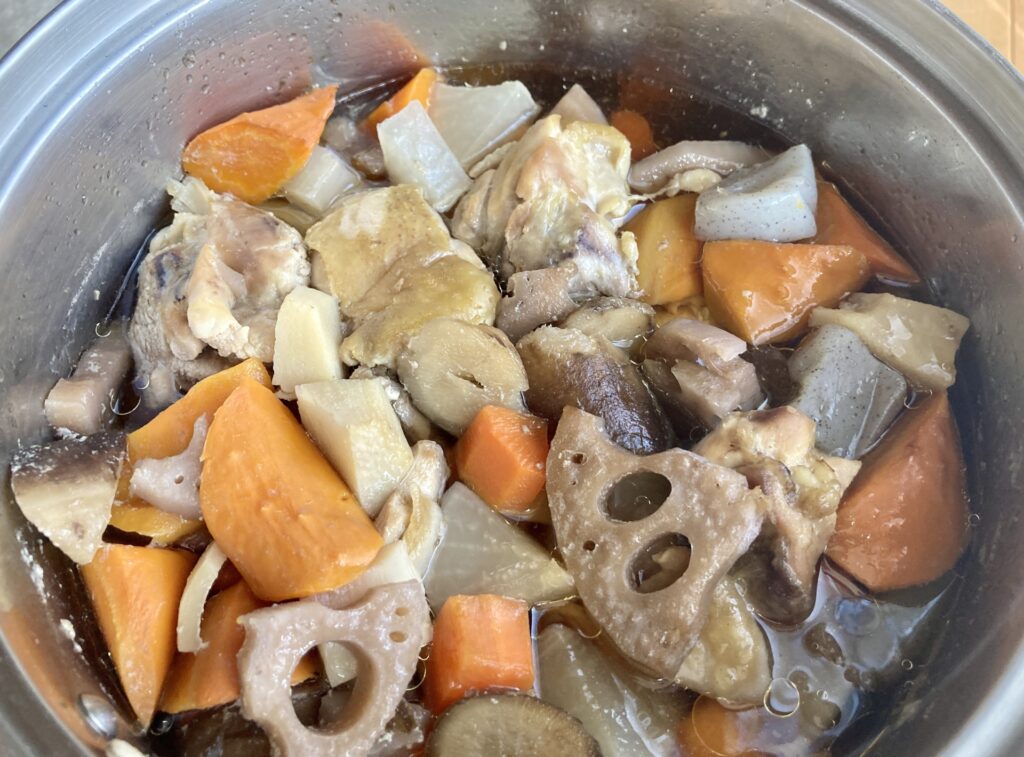
Making Chikuzen-ni at home is surprisingly straightforward. Below is a simple recipe you can follow with commonly available ingredients.
Ingredients Table
| Ingredient | Metric | Imperial |
| Chicken thighs | 400 g | 14 oz |
| Carrot | 1 medium | 1 medium |
| Lotus root (peeled) | 100 g | 3.5 oz |
| Burdock root | 1/2 root | 1/2 root |
| Shiitake mushrooms | 4 | 4 |
| Konnyaku | 1 block | 1 block |
| Snow peas | 12 pods | 12 pods |
| Dashi stock | 300 ml | 1 1/4 cup |
| Soy sauce | 3 tbsp | 3 tbsp |
| Mirin | 2 tbsp | 2 tbsp |
| Sake | 2 tbsp | 2 tbsp |
| Sugar | 1 tbsp | 1 tbsp |
Instructions
- Prepare vegetables: Cut carrots into flower shapes or rounds. Peel and slice lotus root and burdock thinly. Soak in water to remove bitterness.
- Blanch konnyaku in boiling water, then cut into bite-sized pieces.
- Sauté chicken in a pot until lightly browned. Add all vegetables (except snow peas).
- Add dashi, soy sauce, mirin, sake, and sugar. Simmer for 20-30 minutes on medium-low heat until vegetables are tender.
- Blanch snow peas, then add at the end for color.
- Let the dish rest for a few hours or overnight for best flavor.
Cooking Tips for the Best Texture and Flavor
- Avoid overcooking the vegetables—simmer gently and check tenderness with a fork.
- Layer the ingredients: place harder vegetables like burdock at the bottom.
- Resting Chikuzen-ni enhances the umami-rich flavor.
- Use kombu-based dashi for a deeper umami profile, or instant dashi for convenience.
Vegan and Vegetarian Variations
Chikuzen-ni can easily be adapted for plant-based diets:
- Replace chicken with firm tofu, tempeh, or seitan.
- Use kombu and shiitake dashi instead of traditional fish-based dashi.
- Add kabocha squash, daikon, or edamame for extra nutrients and variety.
Sample Vegan Chikuzen-ni Recipe:
Use the same simmering method, replacing animal-based ingredients with vegetables and tofu. The result is a lighter but equally flavorful dish that retains the dish’s symbolic importance.
How Chikuzen-ni Compares to Other Nimono Dishes
| Dish | Key Ingredients | Cultural Use | Flavor Profile |
| Chikuzen-ni | Chicken, root vegetables | New Year, home meals | Savory, umami-rich |
| Nikujaga | Beef, potatoes, onions | Everyday comfort food | Sweet-savory |
| Kabocha Nimono | Kabocha squash | Seasonal side dish | Sweet, mild |
| Oden | Fish cakes, daikon, eggs | Winter hot pot | Light soy-dashi broth |
Chikuzen-ni stands out for its celebratory roots and symbolic ingredients, while others are more seasonal or casual.
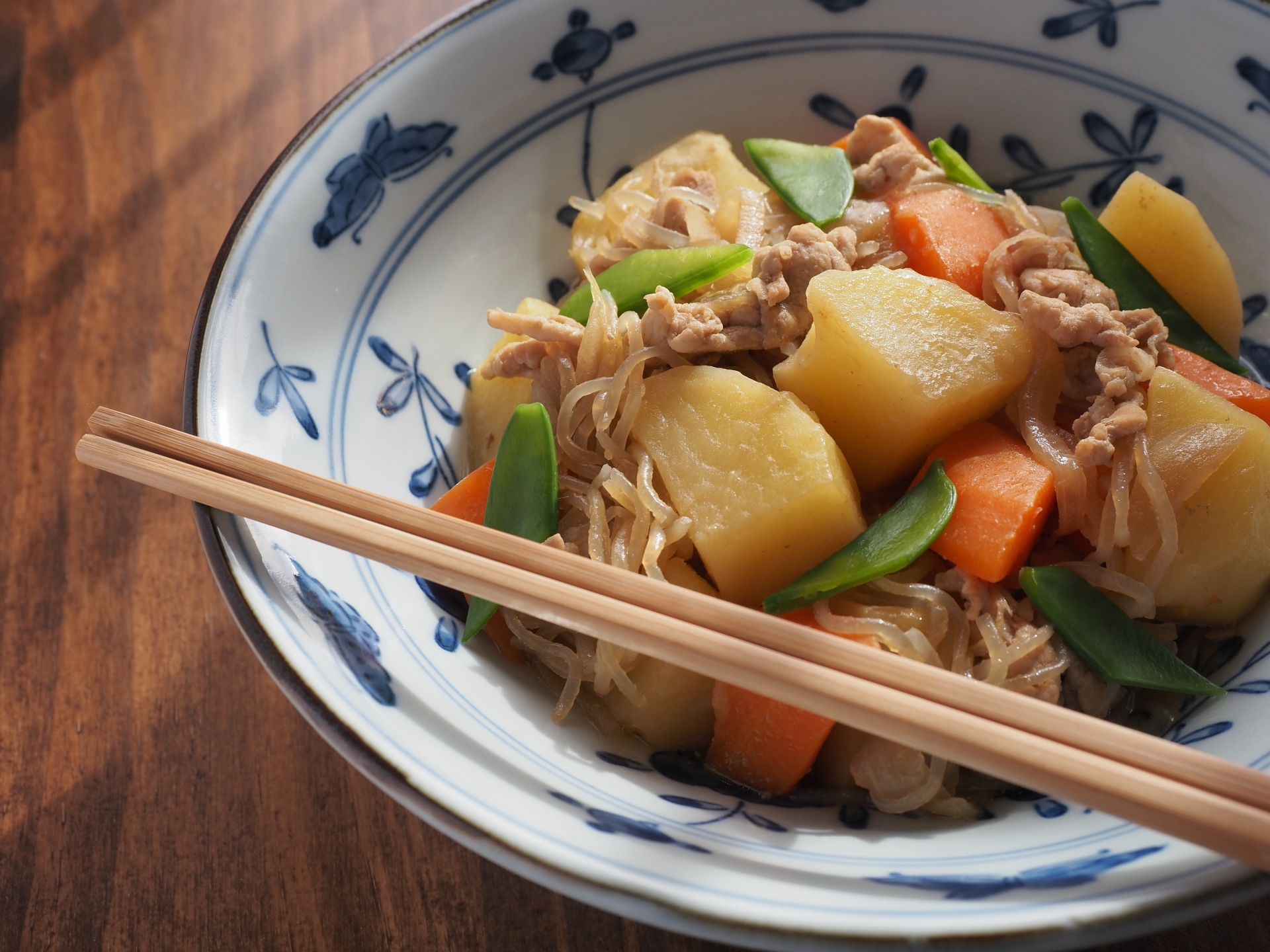
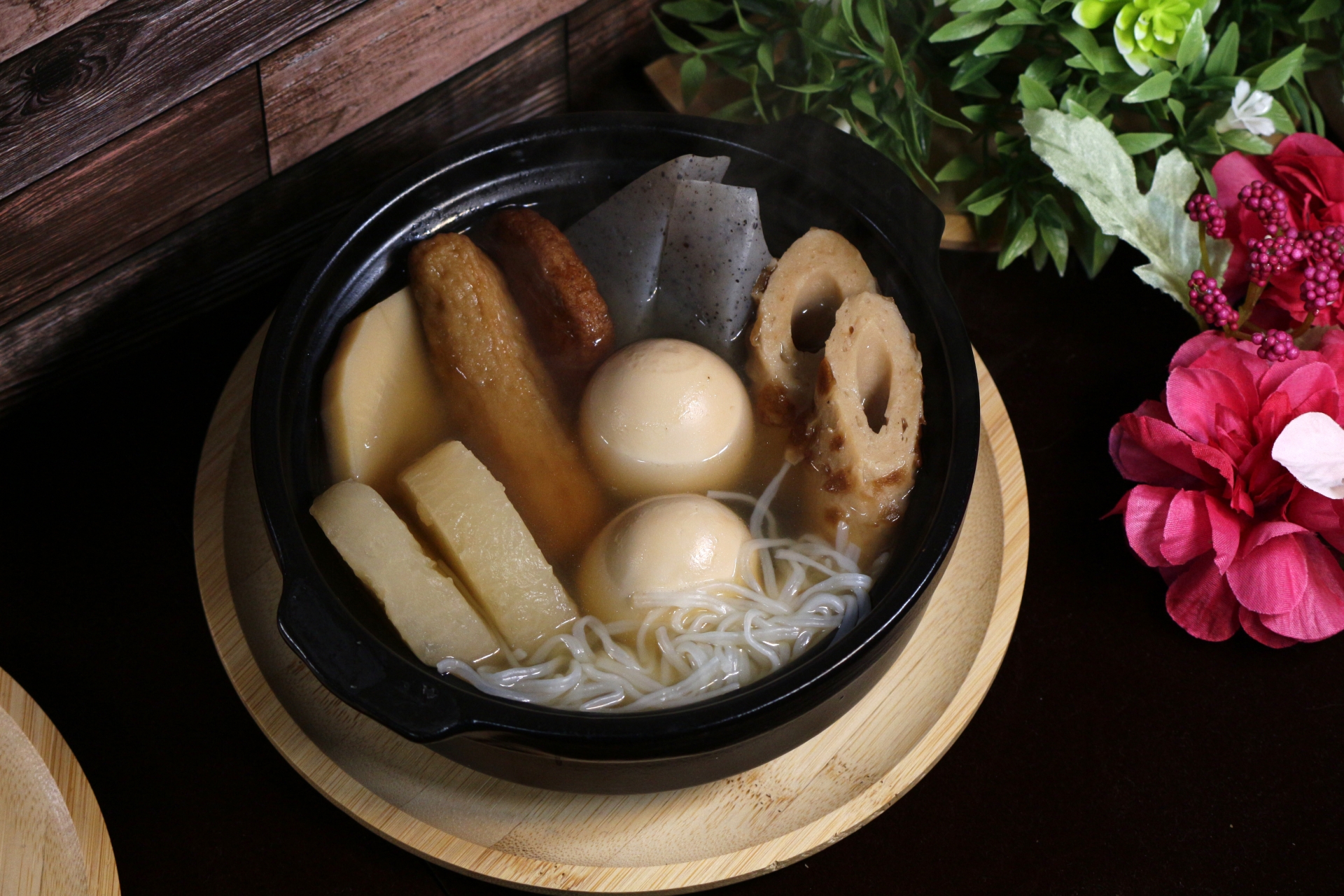
Storing and Reheating Chikuzen-ni
Chikuzen-ni stores very well and even improves in flavor over time.
Storage Tips:
- Refrigerator: Store in airtight container for up to 4 days.
- Freezer: Freeze portions for up to 1 month. Use freezer-safe bags or containers.
Reheating Methods:
- Microwave: Heat in short intervals, covered, with a splash of water.
- Stovetop: Reheat slowly on low heat to prevent overcooking.
Shelf Life Box
- Fridge: 3–4 days
- Freezer: 1 month
- Best flavor: After 1 day of resting
FAQs About Chikuzen-ni
What does Chikuzen-ni taste like?
It has a rich, slightly sweet-savory flavor from soy sauce, mirin, and dashi. The vegetables absorb the broth, offering deep umami and natural sweetness.
Is Chikuzen-ni healthy?
Yes! It’s packed with fiber-rich vegetables, lean protein, and low in saturated fat. Vegan versions are even lighter.
Can you freeze it?
Absolutely. Portion and freeze it for quick meals. The flavor holds up well when reheated.
Where can I find the ingredients outside Japan?
Look for Asian grocery stores or online shops. Substitutes like potatoes and green beans can replace rarer ingredients.
Conclusion: Why Chikuzen-ni Belongs on Your Table
Chikuzen-ni is a heartwarming dish that beautifully captures the essence of Japanese cooking—flavorful, symbolic, and nourishing. Whether you’re celebrating the New Year or simply craving comfort food with a cultural twist, this dish offers a delightful balance of nutrition and taste. Its adaptability makes it a perfect introduction to Japanese cuisine, even for beginners.
Try making Chikuzen-ni this weekend and bring a taste of Japanese tradition to your table.
Leave a comment and share your own twist on this classic dish!

